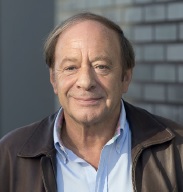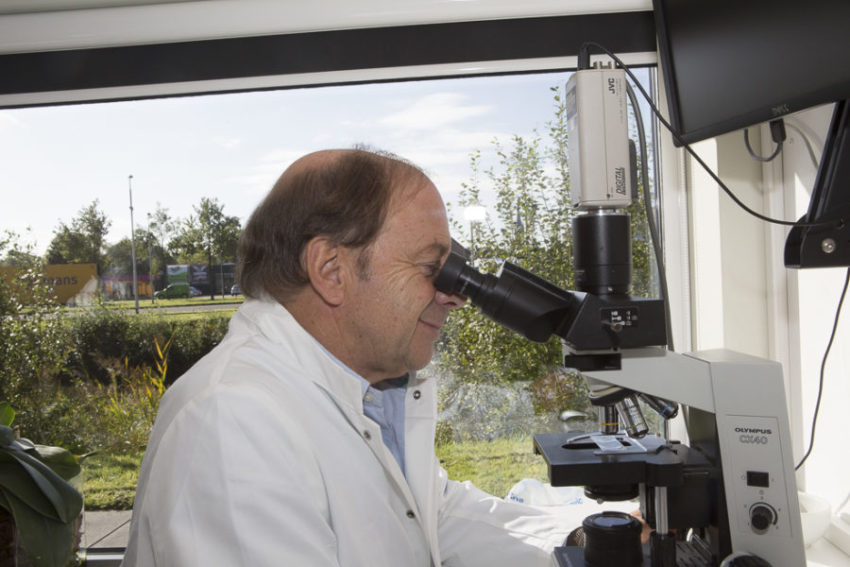

Problems with doping regulations
Pigeon racing after WWII
The time that certain ‘lofts’ later in the season (August/September) were flying stars from the sky, is already many years behind us. It started, like so much in pigeon racing, in Belgium. That’s also where the best pigeons come from, which is logical when you realize that the Germans seized many more pigeons in the Netherlands than in Belgium during the Second World War. In the Netherlands there were almost no pigeons left in 1945. In Belgium, there were still some in hiding and they weren’t the worst of course. In the book ‘Het Geheim der Kampioenen‘(The Secret of Champions), published in 1945, written by my father Piet de Weerd, he describes how he drove together with Jef Oomens (for me, uncle Jef) to Belgium to bring back some good pigeons to the Netherlands in order to boost pigeon racing here again. This mission was dedicated to Dr. Bom, the so-called first pigeon fancier in our country, who in the summer of 1944 sent a letter to the combination Gebr. Oomens-De Weerd with the following text: “I hope that you will take the lead in rebuilding what has been destroyed.” Thus, pigeon racing in the Netherlands was revived after 4 years of war under the impulse of the Gebr. Oomens and Piet de Weerd. ‘Het Geheim der Kampioenen’ was of course the selection and my father was already a pioneer!
Doping list
The super results in Belgium came at the end of the last century (which seems a long time ago, but it is not) because of corticosteroids. And they are now, of course, prominent on the doping list. Over a period of 35 years the corticosteroids – produced in the adrenal cortex of humans and animals – are in my opinion the most important chemicals that influence the performance of our competition pigeons. And actually, it’s not even a direct stimulation, but in my opinion more of a change of the hormonal ‘housekeeping’ of the treated pigeons. This is also apparent, because by dimming out and lighting up you also achieve a postponement of the moulting season and that’s what it’s all about. In pigeons that are still far from hormonal moulting, the sex hormones have a more prominent role (motivation) and therefore they fly home faster and are especially more focused. This is a theory that I have formulated after many years of research.
Corticosteroids are not widely used any more, the chance of being caught is quite high and doping transgressors are swiftly punished. Slowly but surely other substances were also being looked at and a number of groups were formulated, such as:
1. Corticosteroids
2. Anabolic steroids
3. Non-steroidal anti-inflammatory agents
4. Beta-blockers
5. Diuretics or ‘masking substances’, substances that excrete doping products faster.
The strange and even bizarre thing about this whole story is that it is a kind of copy of the human and equestrian doping regulations. I would dare to say that by pigeons there is just about nothing known about all these substances in terms of efficacy, apart from the corticosteroids. Only a few people know about it and hardly any research is going on! It also isn’t really viable. The studies are unaffordable, especially if you still have to calculate all kinds of threshold values that may occur due to ‘food contamination’.
Humanely speaking, the doping problem is a mess despite the fact that there is a lot of money available and the measurability is much greater. Of course, you can put anything in a pigeon and measure it later in droppings (urine), blood or feathers, but the question should be: “Does this affect performance in a positive way?” This is almost impossible to measure with pigeons, especially since they also have a few (?) days in the basket.
The Belgians have a so-called Red List drawn up consisting of the following groups:
A. List of prohibited products
- Corticosteroids
- Bronchodilators including B-agonists
- Anabolic steroids
- Non-steroidal anti-inflammatory agents
- Narcotic analgesics
- Analgesics
- Substances with an effect on the
nervous system, including caffeine - Synthetic hormones and growth
promoters
A few hundred products have been added here and the list is only getting longer. Drawn up by a number of veterinarians who have a special interest in racing pigeons but usually no full-time pigeon veterinarians, as already said a copy of the humane and equestrian doping lists and no one who knows if, and if so, what that could do to our pigeons!
If a component can either occur naturally in pigeons (produced in the body) or can be found as a result of contamination of food, decision limits are used whose values are clearly higher than those found in components produced in the body or in components caused by contamination of food. Therefore, only clearly increased semi-quantitative measurements values are considered for the administration of a prohibited substance. These decision limits shall not be released in order to avoid manipulation and fraud based on these data.
It is important to know that certain plants or fungi may contain substances in lower or even higher concentrations, which are listed above. Although only exceptional concentrations of these substances lead to a positive analysis, it is in any case not advisable to administer such plants and fungi to racing pigeons. Each fancier is, and remains, responsible for the (extracts of) plants and fungi that he administers to his racing pigeons. The same applies to products which may contain these plants or fungi: the fancier (and only the fancier) is and remains responsible for the products he gives to his pigeons.
Moreover, most of these plants and fungi are toxic and can therefore pose a serious animal welfare problem.
B. Manipulation
Products capable of modifying the endogenous or exogenous concentration of substances in urine, droppings/feathers with the aim of modifying the integrity of the sample (including, but not limited to, diuretics).
All in all, it’s an extremely difficult matter with very little scientific know-how and accompanied by enormous costs of expensive investigations and expensive difficult court cases!
BELGICA DE WEERD B.V. I Postbus 4607 I 4803 EP Breda I Nederland
T +31 76 560 02 22 I F +31 76 565 35 70 I info@belgicadeweerd.com I www.belgicadeweerd.com


